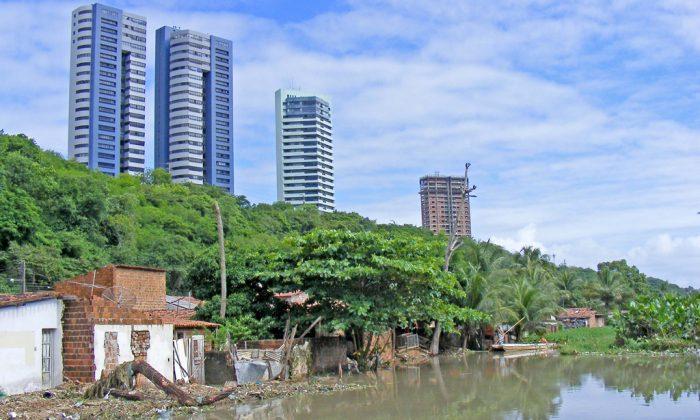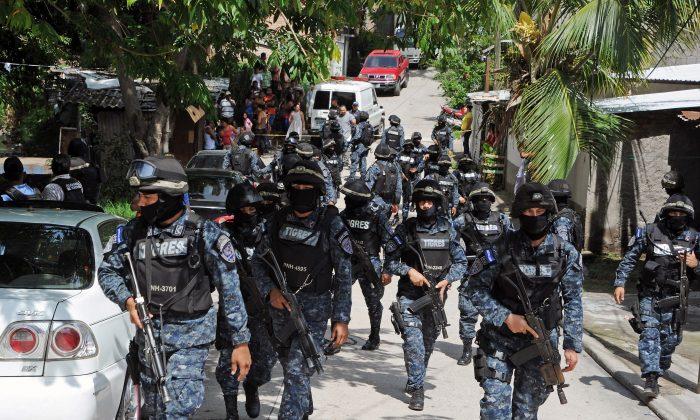Peru has been hailed an emerging market success story, with more than a decade of GDP growth in excess of 6 percent. While booming mining exports have been the overwhelming driver of this, the shopping malls and SUVs in Lima and other major cities are evidence that domestic demand has also been buoyant.
Since the fall of the authoritarian government of Alberto Fujimori in 2000, Peru has enjoyed an unusually long period of political stability, with orderly changes of democratically elected government in 2006 and 2011, and continuity in economic policy.
All of this is in sharp contrast to the economic and political chaos that characterized the country in the 1980s and 1990s. Hyperinflation, high levels of corruption, and terrorist threats from the country’s communist party known as the Shining Path and the Marxist Túpac Amaru Revolutionary Movement were a common feature.
But the recent economic boom and political stability mask a series of other severe long-term challenges. Leaving aside the potential for economic difficulties in commodity prices and a plummet in international demand for Peru’s natural resource exports, the country’s role in the international narcotics trade is cause for concern.
Coca Production in Peru
In 2012, Peru surpassed neighboring Colombia as the world’s largest producer of coca, the raw material for cocaine. This was the result of far more aggressive and successful eradication efforts in Colombia. Peru has since stepped up eradication aggressively, meaning that coca production last year was at its lowest level since 1998, and Colombia regained its position as the world’s leading producer. But this does not mean that the problems that Peru face are any less serious.
Coca production in Peru is closely linked to the remnants of Shining Path. These are concentrated in an area known as the Apurimac, Ene, and Mantaro River Valleys (VRAEM), in the south central Andes. While quite aggressive military operations are targeting the group there, authorities earlier this year decided to halt eradication, set up a no-fly zone, and encourage farmers to grow alternative crops such as coffee and cocoa. The result has been a precipitous increase in coca production in the VRAEM, alongside a dramatic fall in output elsewhere.
In the context of overall falling levels of coca production, it might be possible to argue that containing Shining Light and its activities in the VRAEM is a sensible strategy. However, the VRAEM is also the scene for operations by international drug cartels, particularly from Colombia and Brazil.
International Operations
Indeed, a more general significant consequence of Peru’s position in the global drugs trade has been a rise in international cartel operations there. Mexican cartels dominate, operating particularly in northern Peruvian coastal cities such as Chimbote, Trujillo, and Tumbes. And this has driven a massive increase in violence.
While Peru’s murder rate is relatively low by Latin American standards (at 6.6 per 100,000 inhabitants in 2013), murder rates in some northern cities resemble those in the more violent countries of Central America. In 2013, the city of Barranca saw 36.2 murders per 100,000 inhabitants, while Trujillo had 25, Tumbes 24.8, and Chimbote 22.1.
Organized Crime
Drug cartel activities occur alongside organized crime, with extortion a growing problem. The fruits of economic boom have helped fuel this, with the huge increase in construction activity a frequent target for criminal groups such as La Gran Familia, whose operations are taking on an international flavor. Peripheral areas of Lima are increasingly being targeted, such as San Juan de Lurigancho, a large area where there are two large prisons from which many extortion operations are coordinated despite authorities’ attempts to block mobile phone and internet access.
There is a lack of police capacity to combat organized crime, along with deeply embedded corruption. Expensive mobile phone signal blockers installed at prisons, for example, are rarely switched on as a result of corruption within the prison system. And, for as long as the wealthier parts of Lima remain largely untouched by violent crime, authorities are likely to do relatively little to tackle it.
Indeed, the relative impunity of organized criminals suggests that corruption may reach relatively high levels, which is another frequent negative consequence of a natural resource boom. Currently facing investigation for corruption are two recent former presidents, one of whom is alleged to have links to drug trafficking.
All of this sets the scene for a presidential election next April, which takes place amid signs that the prolonged economic boom may be starting to run out of steam. It is not yet clear who the candidates will be, though a number of key contenders are starting to emerge. There will probably be a highly competitive campaign, with candidates making plenty of accusations against each other.
None of this is likely to make much difference, however, with current security and counternarcotics strategies remaining largely unchanged. This means that the status quo is likely to continue. Failing to deal with its drug problem in the long term will harm Peru’s continued growth and, if its economy suffers a downturn, there is potential for a major spike in violent crime and related activity.
Neil Pyper is a senior lecturer in business/management at the Coventry University. This article was previously published on TheConversation.com




Friends Read Free